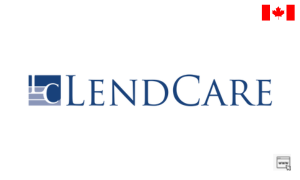BMO Home Equity Loan
Also known as a second mortgage, this one-time loan starts at $10,000 and can go as high as 80% of your home’s value 🪙
Looking to tap into the value you’ve built in your home for renovations, debt consolidation, or other significant expenses? A BMO Home Equity Loan could be the powerful financial tool you need! This type of loan allows you to borrow a lump sum of money secured by the equity in your home, offering several compelling benefits for homeowners across Canada.
Here’s how a BMO Home Equity Loan can work for you
- Access Significant Funds: Leverage the equity you’ve accumulated in your property to access a substantial amount of capital for your various needs.
- Competitive Fixed Rates: Enjoy the stability and predictability of a fixed interest rate throughout the entire loan term, making budgeting easier. BMO often offers attractive rates compared to other borrowing options.
- Flexible Repayment Terms: BMO provides a range of repayment terms, typically from 5 to 20 years, allowing you to choose a schedule that aligns with your financial situation and cash flow.
- Use the Funds for What Matters Most: Whether it’s a major home renovation to increase your property’s value, consolidating higher-interest debts to save on interest payments, funding education expenses, or making another significant purchase, a BMO Home Equity Loan offers the flexibility to use the funds as needed.
- Potential Tax Advantages: In some cases, the interest paid on a home equity loan may be tax-deductible, especially when used for home improvements. It’s always best to consult with a tax advisor to understand your specific situation.
- No Prepayment Penalties (Typically): BMO generally allows you to pay off your home equity loan early, either in part or in full, without incurring prepayment penalties, providing greater financial flexibility.
If you’re a homeowner in Canada looking for a reliable way to access funds for significant projects or debt management, the BMO Home Equity Loan offers a compelling combination of competitive rates, flexible terms, and the security of borrowing against your home’s equity. Explore how a BMO Home Equity Loan can help you achieve your financial goals!
Understanding Home Equity Loans: What Are They?
A home equity loan is essentially a loan where your home acts as collateral. In simpler terms, it’s a way to borrow money based on the equity—the portion of your home that you truly own outright. Think of it as tapping into the value you’ve built over time in your property to get a lump sum of cash for your needs.
Whether you want to fund major home improvements, consolidate high-interest debt, or cover unexpected expenses, a home equity loan can provide a substantial amount of cash quickly. It’s often referred to as a “second mortgage” because it’s a separate loan in addition to your primary mortgage.
Why Might You Need a Home Equity Loan?
Life is unpredictable. Sometimes, you find yourself facing large expenses that require a big pile of cash. Here are some common reasons homeowners consider home equity loans:
- Major home repairs: Roof replacements, HVAC system upgrades, or fixing structural issues can get pricey fast.
- Debt consolidation: Paying off high-interest credit cards or personal loans with a lower-interest home equity loan can save you money.
- Home improvements: Adding a garage for your classic motorcycle collection or converting that back garage into a mother-in-law suite.
- Unexpected expenses: Medical bills, education costs, or other financial curveballs life throws your way.
Instead of waiting to save up or relying on high-interest credit cards, a home equity loan lets you access the cash you need now, using the equity you’ve built in your home as leverage.
How Does a Home Equity Loan Work?
The mechanics of a home equity loan are straightforward but important to understand. The amount you can borrow depends on your home’s current market value and how much you still owe on your mortgage.
Most lenders allow you to borrow up to 90% of your home’s market value minus what’s left on your original mortgage. Here’s a quick example to illustrate:
- Your home is worth $300,000.
- You still owe $90,000 on your primary mortgage.
- Multiply your home’s value by 90%: $300,000 × 0.90 = $270,000.
- Subtract your mortgage balance: $270,000 − $90,000 = $180,000.
In this case, you could potentially borrow up to $180,000 as a home equity loan. After closing, the loan amount is disbursed to you as a lump sum, deposited directly into your bank account.
Keep in mind, this loan comes with monthly payments, a fixed interest rate, and closing costs, similar to your primary mortgage. Essentially, you’ll now have two loans secured against your home: the original mortgage and the home equity loan.
The Upsides of Home Equity Loans
Home equity loans offer several compelling benefits that make them an attractive option for many homeowners:
1. Easier Qualification
If you’ve already qualified for a conventional mortgage, securing a home equity loan is often a smoother process. As long as your debt-to-income ratio (DTI) and credit score haven’t drastically changed, lenders typically consider you a lower risk.
2. Fixed Interest Rates and Payments
Unlike credit cards or some personal loans with variable rates, home equity loans usually come with fixed interest rates. This means your monthly payments remain consistent throughout the loan term, helping you budget without surprises.
3. Lower Interest Rates
Because your home serves as collateral, lenders offer lower interest rates compared to unsecured loans like credit cards or personal loans. This can translate into significant savings over time.
4. Lump Sum Disbursement
You receive the entire loan amount upfront, giving you the freedom to allocate funds as needed. Whether it’s a single large project or multiple smaller expenses, you control how the money is spent.
5. Flexibility in Use
There are no restrictions on how you use the loan proceeds, but it’s wise to invest in value-generating upgrades or improvements that enhance your living experience or increase your home’s value.
The Downsides of Home Equity Loans
Of course, no financial product is without drawbacks. Here are some considerations to keep in mind before diving into a home equity loan:
1. Additional Monthly Payment
Taking out a home equity loan means managing two mortgage payments—your original mortgage and the new loan. This can add a few hundred dollars or more to your monthly budget, which requires careful planning.
2. Risk of Foreclosure
Because your home is collateral, failing to make payments on either loan could lead to foreclosure. This is a serious risk, so only take on a home equity loan if you’re confident in your ability to repay.
3. Reduced Equity
Borrowing against your home equity reduces the amount of cash you’d receive if you sold your home. You’ll need to pay off both the original mortgage and the home equity loan before any proceeds are yours.
4. Closing Costs
Just like your primary mortgage, home equity loans come with closing costs, typically ranging from 2% to 5% of the loan amount. These fees can add up, so factor them into your overall cost.
Other Financing Options: Cash-Out Refinance
If you’re looking for alternatives, a cash-out refinance is worth considering. Instead of taking out a second loan, this option involves refinancing your existing mortgage for a higher amount than you currently owe and pocketing the difference.
The advantage here is having a single monthly mortgage payment rather than two separate ones. If current mortgage rates are lower than when you first bought your home, a cash-out refinance might save you money on interest.
However, if rates are higher or you prefer fixed payments on a second loan, a home equity loan might be more suitable.
Who Should Consider a Home Equity Loan?
Home equity loans are ideal for homeowners who:
- Have built significant equity in their homes.
- Need a lump sum of cash for a specific purpose like home renovations or debt consolidation.
- Prefer fixed interest rates and predictable monthly payments.
- Have stable income and feel comfortable managing an additional loan payment.
On the other hand, if your financial situation is uncertain or you’re uncomfortable with the risk of using your home as collateral, you may want to explore other options.



